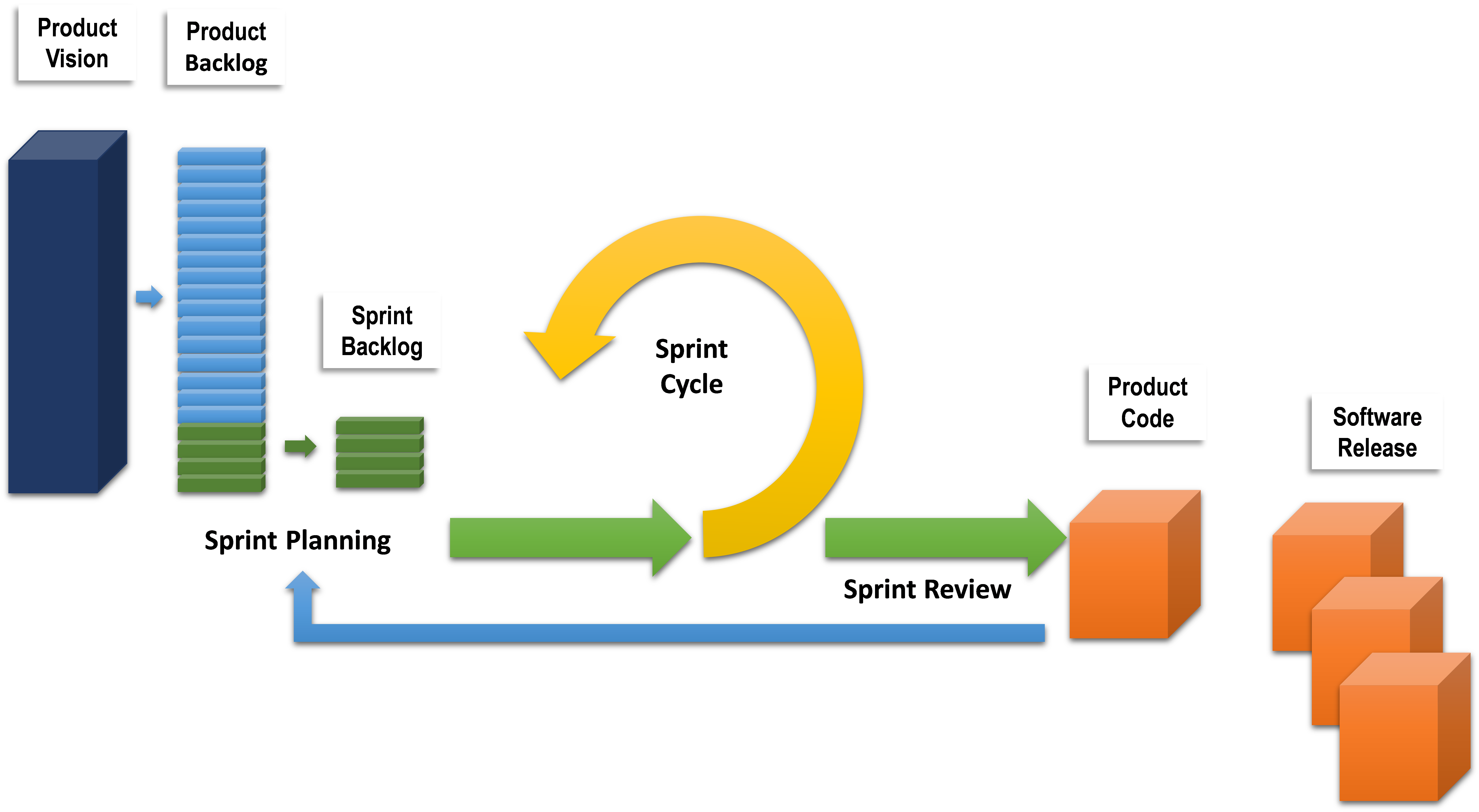Agile development has gained widespread popularity in the software industry for its flexibility and iterative approach. Agile development aims to produce high-quality software quickly, with a focus on adaptability and customer satisfaction. However, like any methodology, it comes with its own set of advantages and challenges. Let's take a closer look at both.

A Typical Agile Process (1).
The illustration on the left showcases a standard Agile process. In an Agile software development framework, the Product Vision serves as the foundation for creating a product roadmap, which outlines the strategic objectives to be accomplished during the performance period. The roadmap's components are then divided into detailed tasks, prioritized in the product backlog, and transformed into user stories that define the desired functionalities of the digital service.
Product backlog items are utilized to create technical requirements, which are then delivered through releases and sprints. The sprint backlog includes user stories that have been reviewed, refined, and chosen by the team to be worked on during a sprint. Sprints typically last between 1 to 4 weeks and represent the period during which user stories are transformed into either functional code or working software. Multiple sprints focusing on the same type of functionality are usually grouped into releases of deployable and shippable code. While individual sprint artifacts are production-ready, they can also be combined into a larger software release.
Advantages
- Flexibility and Adaptability
- Customer Involvement
- Faster Time-to-Market
- Improved Quality
- Enhanced Collaboration
- Continuous Improvement
Disadvantages
- Scope Creep
- Requires Experienced Team
- Less Predictability
- Potential for Burnout
- Limited Documentation
- Overemphasis On Speed
- Challenges with Large, Complex Projects
